Are Tea Leaves Good for Plants? Discover the Benefits
Have you ever thought about using tea leaves in your garden? It might seem unusual, but tea leaves can be a fantastic addition to your gardening routine. Tea leaves provide essential nutrients like nitrogen, which promotes healthy leaf growth and enhances the overall vitality of your plants. This makes them a great natural fertilizer for many types of plants.
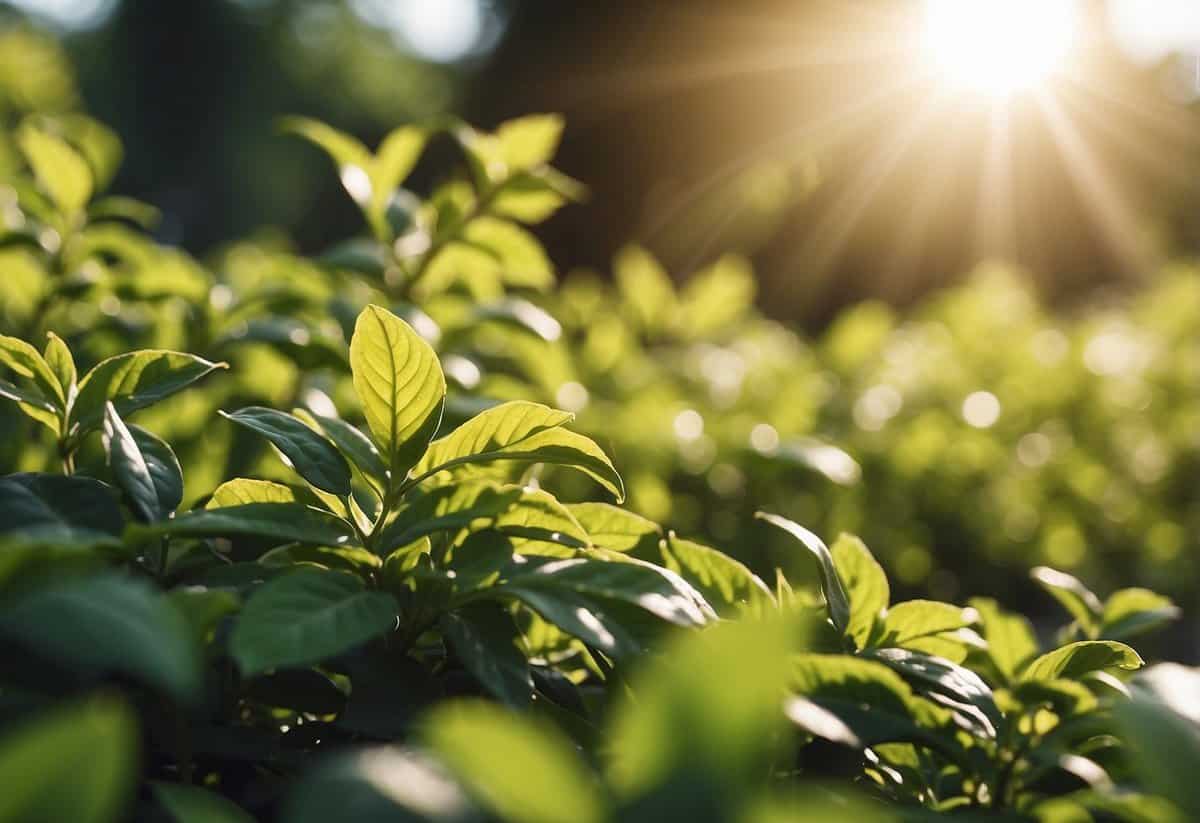
Certain plants, such as roses, hydrangeas, ferns, and acid-loving plants like azaleas and rhododendrons, particularly thrive when given tea leaves. These plants benefit from the extra nutrients, leading to richer, more vibrant blooms. Spreading used tea leaves around the base of these plants can help them flourish.
Using tea leaves in your compost is another smart gardening trick. Not only do they enrich the compost with vital nutrients, but they also help deter pests. Imagine having a healthier garden with fewer pests using something as simple as your leftover tea leaves. This small change can lead to a big difference in your gardening success.
Benefits of Tea Leaves for Plant Health

Tea leaves can be a great addition to your garden, offering a boost in plant growth and soil health. They are rich in important nutrients and can act as an effective natural fertilizer. Additionally, tea leaves help improve the structure and drainage of the soil.
Nutritional Content and Its Effects
Tea leaves are packed with nutrients like nitrogen, potassium, phosphorus, and iron. These elements aid in various aspects of plant growth.
Nitrogen is vital for leaf growth and overall plant health. It helps in the production of chlorophyll, which is crucial for photosynthesis. Potassium and phosphorus support strong root development and flower production. Iron helps in developing lush, green foliage.
Using tea leaves in your garden can enhance the health of acid-loving plants like azaleas and roses. This is because tea leaves can lower the soil’s pH levels, making it more acidic. Adding tea leaves to your soil ensures your plants get these essential nutrients, promoting better growth and vibrant blooms.
Tea Leaves as a Natural Fertilizer Option
Tea leaves act as a natural fertilizer, providing many of the necessary nutrients for plant health. When you use tea leaves, you offer your plants a consistent supply of organic matter without relying on commercial fertilizers.
Sprinkling used tea leaves around the base of your plants can offer slow-release nutrients. This is especially useful for herbs and flowers such as marigold and roses.
Tea leaves also help in retaining moisture in the soil, which can be beneficial during dry spells. By becoming a natural mulch, they help in suppressing weeds, allowing your plants to thrive without competition for nutrients and water.
Improving Soil Structure and Drainage
One of the overlooked benefits of tea leaves is their ability to improve soil structure and drainage. As an organic material, tea leaves decompose over time, enhancing the soil’s quality.
When mixed into soil, tea leaves can help break up compacted soil, making it easier for plant roots to grow. This can result in better oxygen and nutrient absorption for plants like azalea.
Adding tea leaves also improves drainage, preventing water from pooling around plant roots and reducing the risk of root rot. Better soil structure ensures that water can reach the deep roots of your plants, fostering healthier and more robust growth.
Using tea leaves in your garden can be a simple, eco-friendly way to promote healthier plants and richer soil.
Preparing and Using Tea Leaves in Your Garden
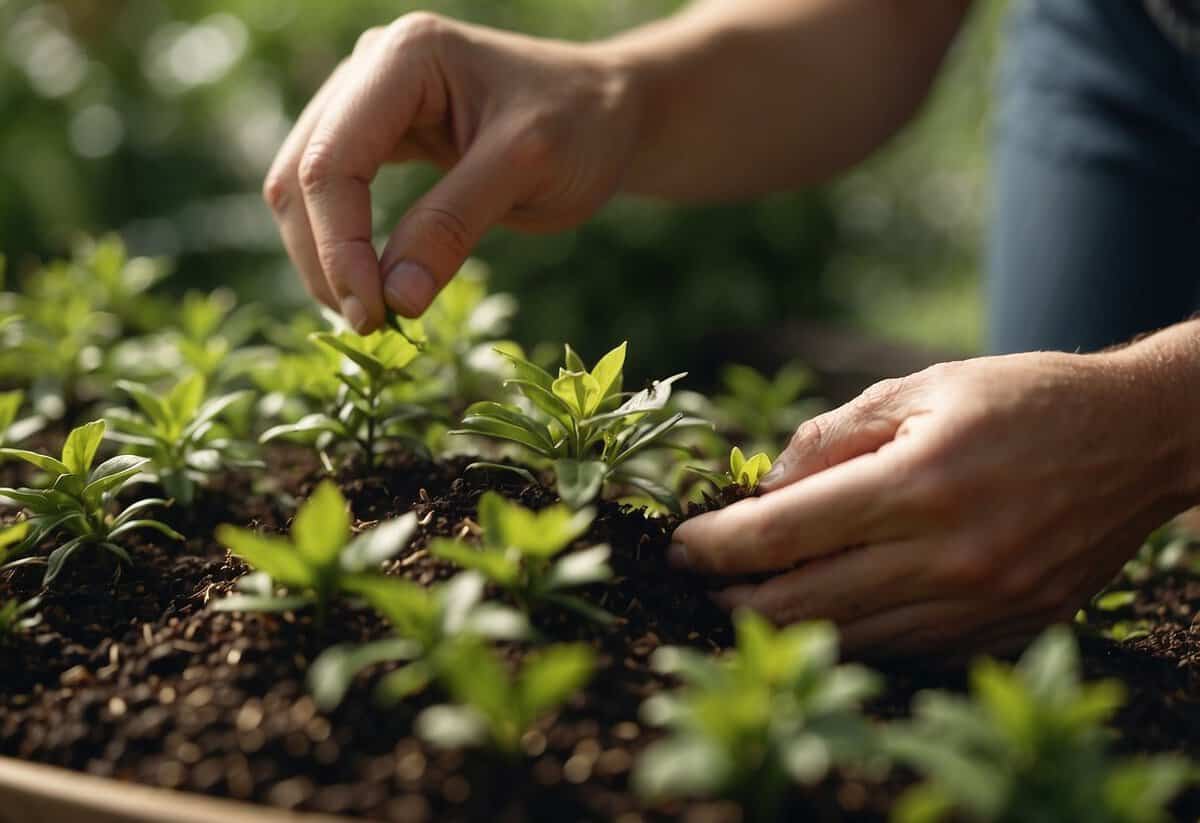
Tea leaves can enhance your garden by improving soil health, providing extra nutrients, and keeping moisture in the soil. Here are some effective methods to use leftover tea leaves to benefit your plants.
Composting Tea Leaves
Tea leaves are great for composting. They add important nutrients, like nitrogen, which helps the decomposition process. To compost tea leaves, simply add them to your compost pile. Both black tea, green tea, and herbal tea leaves are suitable.
Ensure that tea bags are free from staples and strings before adding them. Paper tea bags can decompose along with the leaves. By incorporating these, you enhance your compost, making it richer and more beneficial for your garden.
Mulching with Tea Leaves
Tea leaves can also be used as mulch. They help retain moisture in the soil and suppress weeds. To mulch with tea leaves, spread them around the base of your plants.
Using tea leaves as mulch can improve soil structure by adding organic matter. This method is simple and effective, making your soil easier to work with and more fertile for plant growth. Make sure the tea leaves are evenly spread to cover the soil surface properly.
Creating Liquid Tea Leaf Fertilizer
Creating a liquid fertilizer from tea leaves is another excellent option. Soak used tea leaves in water to extract their nutrients. After soaking for a day or two, strain the mixture and use the liquid to water your plants.
This tea leaf solution provides a gentle nutrient boost and helps keep plants hydrated. You can use this method with any type of tea, whether black, green, or herbal. The liquid fertilizer is easy to make and can be a cost-effective way to nourish your garden.
Using tea leaves in your garden is a simple but effective way to enhance soil health and plant growth. Whether you compost, mulch, or create liquid fertilizer, tea leaves provide valuable benefits for your gardening efforts.
The Impact of Tea Leaves on Soil Acidity
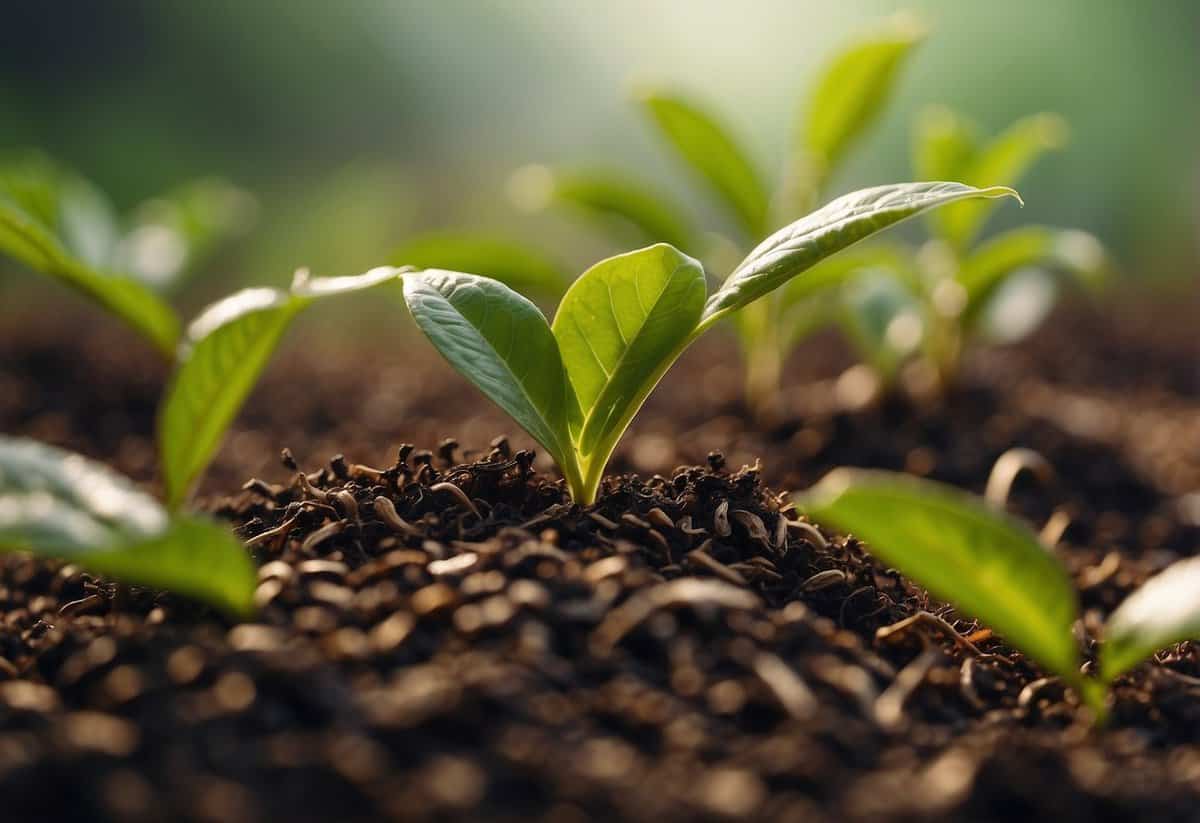
Tea leaves can make the soil more acidic due to the tannic acid they contain. When you add tea leaves to your garden, you’re essentially lowering the soil’s pH balance. This can be great for plants that thrive in acidic soil.
Certain plants love acidic soil. Hydrangeas, for instance, produce blue blooms in more acidic conditions. Other plants like blueberry bushes, rhododendrons, azaleas, and camellias also benefit.
Here are some benefits of using tea leaves for acid-loving plants:
- Hydrangeas: Enhanced blue flower color.
- Blueberry Bushes: Improved fruit production.
- Rhododendrons: Healthier foliage.
- Azaleas: Greater flowering.
- Camellias: More vibrant blooms.
Using tea leaves is simple. You can sprinkle used tea leaves around the base of your plants. Alternatively, mix them directly into the soil. Just be careful not to overdo it, as too much acidity can harm plants that prefer neutral or alkaline soil.
Here is a quick guide:
| Plant Type | Preferred Soil pH | Benefits of Tea Leaves |
|---|---|---|
| Hydrangeas | 5.2 – 5.5 | Blue blooms, vibrant growth |
| Blueberry Bushes | 4.5 – 5.5 | Better fruit |
| Rhododendrons | 4.5 – 6.0 | Healthier foliage |
| Azaleas | 4.5 – 6.0 | More flowers |
| Camellias | 4.5 – 6.5 | Brighter blooms |
Just remember, not all plants love acidic soil. Be sure to match your plants to the right soil conditions for the best results. For more detailed information, you can check out this guide on using tea leaves in your garden.
Common Concerns and Considerations
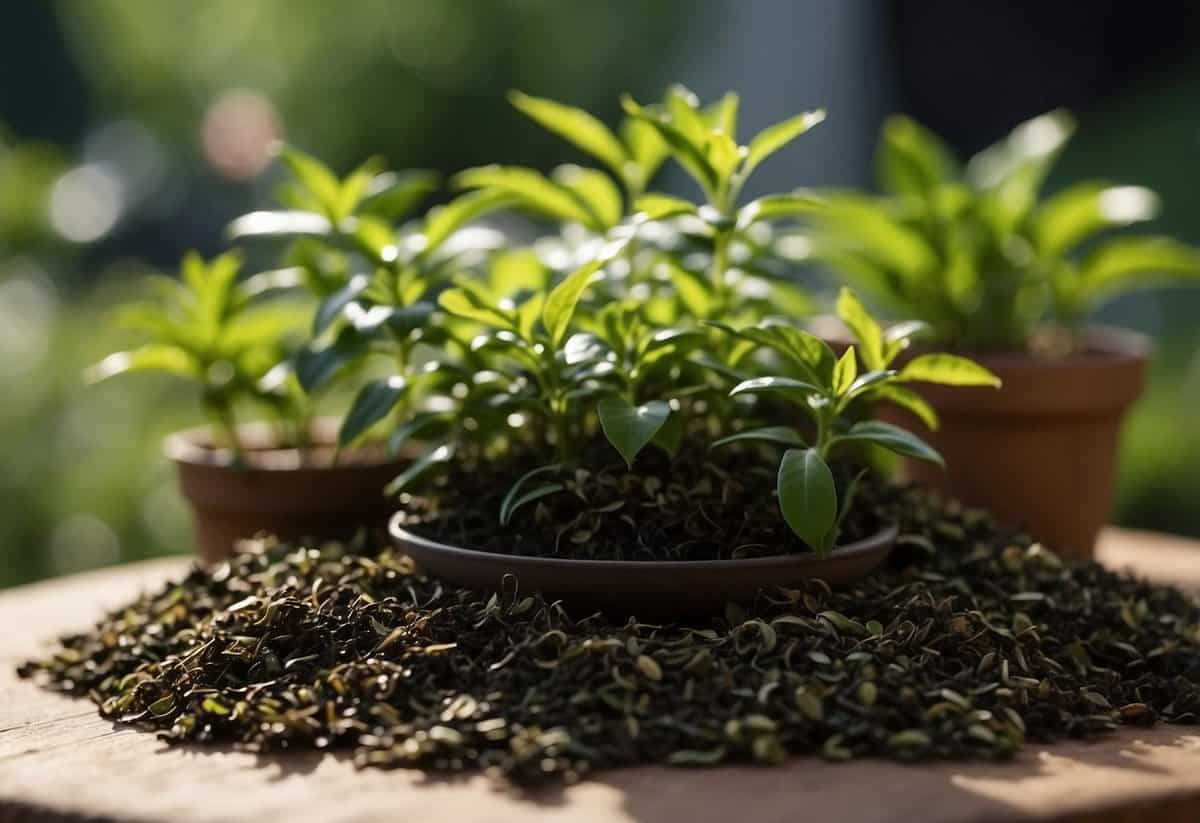
When using tea leaves in your garden, there are several factors to keep in mind to ensure plant health and avoid potential issues. These include pest and disease considerations, the impact of caffeine on plants, and the cost and environmental impact of using tea leaves.
Potential Pests and Disease Issues
Tea leaves can attract pests like insects and encourage fungal diseases. When you use tea grounds, you might notice pests like ants and flies gathering around. These pests can damage your plants and weaken their growth.
In addition, wet tea leaves can create a damp environment that’s perfect for fungal diseases like mold and mildew. Fungal growth can harm your plants by attacking their roots and leaves, reducing their overall health.
To prevent these problems, mix tea leaves well into the soil and avoid placing them directly on top. Keep an eye on moisture levels to prevent fungus. Proper composting can also help manage these issues by balancing the tea leaves with other compost materials.
Caffeine Content and Plant Sensitivity
The caffeine in tea leaves can be beneficial, but it can also be harmful to certain plants. Caffeine can hinder plant growth in sensitive species and disrupt soil balance. Some plants may experience stunted growth if exposed to too much caffeine.
Sensitive Plants:
- Tomatoes
- Pepper plants
Less Sensitive Plants:
- Blueberries
- Roses
Testing your soil’s pH level is vital. Tea leaves can make soil more acidic, which benefits some plants but harms others. It’s important to adjust the amount used based on the plants you’re growing.
Cost-Effectiveness and Environmental Impact
Using tea leaves in your garden can be a cost-effective solution if you’re recycling used tea bags from your household. This reduces waste and provides nutrients to your soil. Composting old tea grounds enriches the compost and speeds up the decomposition process.
Tea bags can also retain moisture in the soil, reducing the need for frequent watering. However, the environmental impact depends on whether the tea bags are biodegradable; some brands use plastic-based materials that do not break down easily.
Always check if the tea bags are compostable and consider the balance of materials in your compost pile to maximize benefits and minimize environmental harm.
Tea Leaves and Specific Plant Types
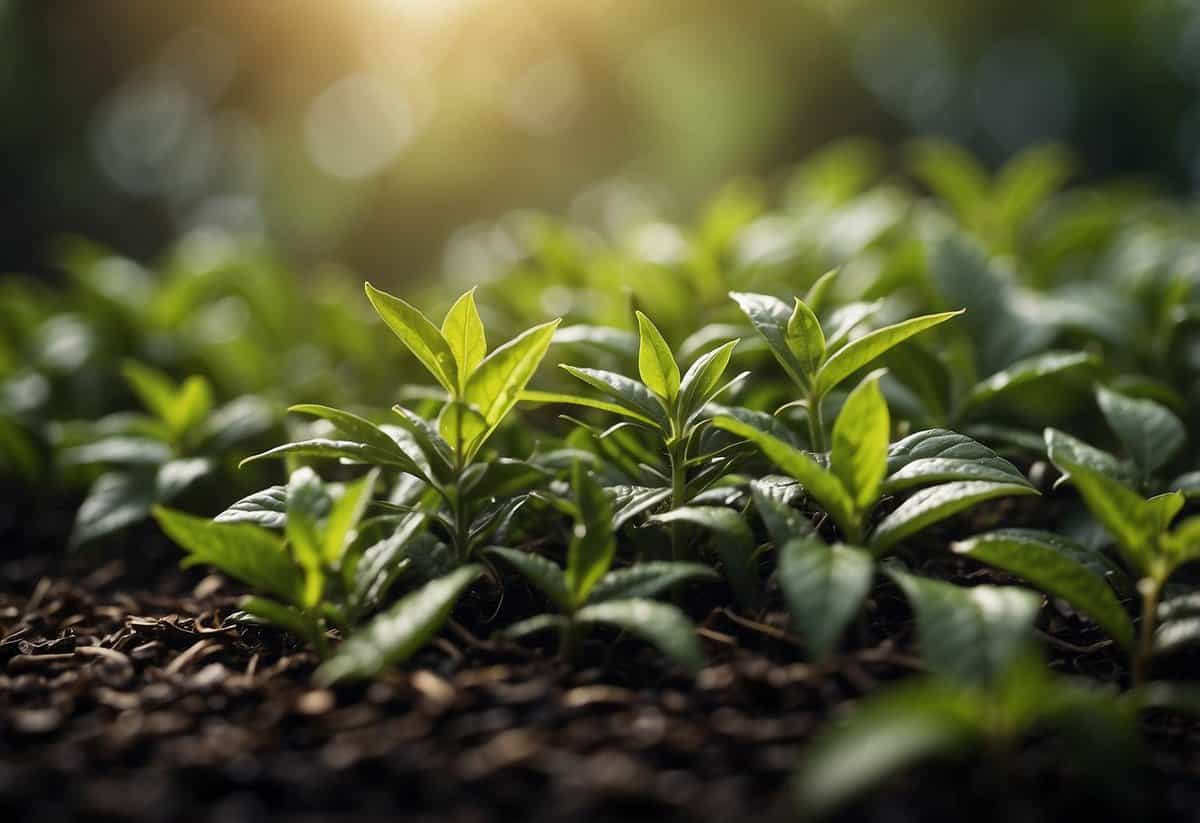
Using tea leaves in your garden can be a great way to recycle organic material and provide nutrients to your plants. However, not all plants benefit equally from tea leaves.
Best Plants to Fertilize with Tea Leaves
Roses appreciate the nutrient-rich properties of tea leaves. The added nitrogen helps promote healthy growth and vibrant blooms. Simply add used tea leaves to the soil around your roses.
Hydrangeas thrive in acidic soil. Since tea leaves are slightly acidic, incorporating them into the soil around hydrangeas can help these plants bloom beautifully.
African violets also benefit from tea leaves. The slight acidity helps them grow stronger and produce more flowers. Just sprinkle some used tea leaves around the base of the plants.
Ferns enjoy the organic matter that tea leaves provide. This addition helps improve soil structure and retains moisture, which ferns love.
Berries like strawberries and blueberries prefer acidic soil. Mixing some tea leaves into their soil can help these fruit plants grow better and yield more fruit.
Plants to Avoid Using Tea Leaves With
Most vegetables like tomatoes and sunflowers do not favor acidic soil. Tea leaves can potentially harm these plants by making the soil too acidic for their liking.
Marigolds tend to thrive in more neutral to slightly alkaline soils. Adding tea leaves could upset their growth due to the increased acidity.
Certain fruit plants that prefer neutral pH levels, such as citrus trees, may not respond well to tea leaves. Too much acidity can hinder their growth and fruit production.
Using tea leaves wisely can boost the health of certain plants while potentially harming others. It’s important to match the plant’s needs with the properties of tea leaves.







